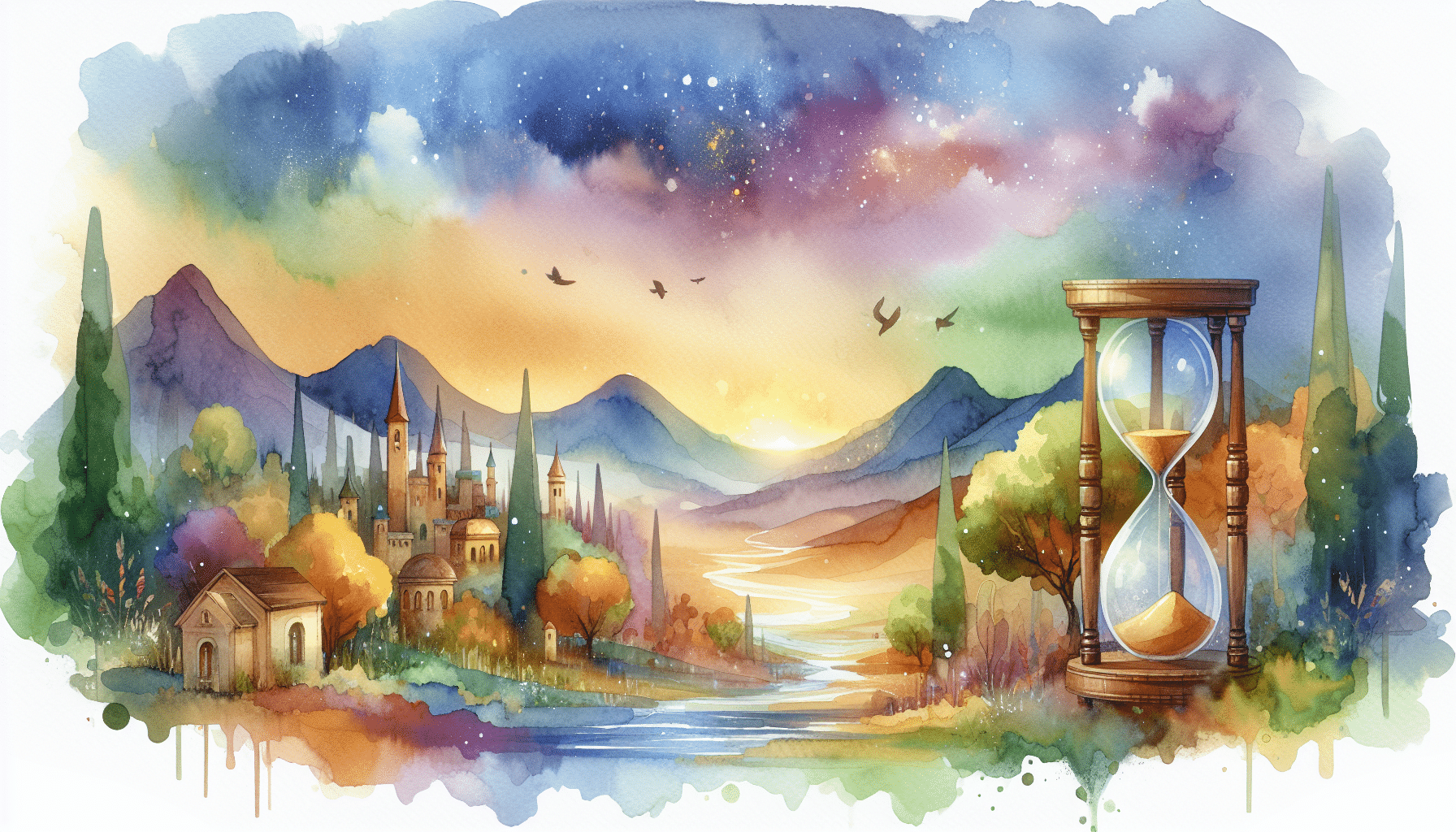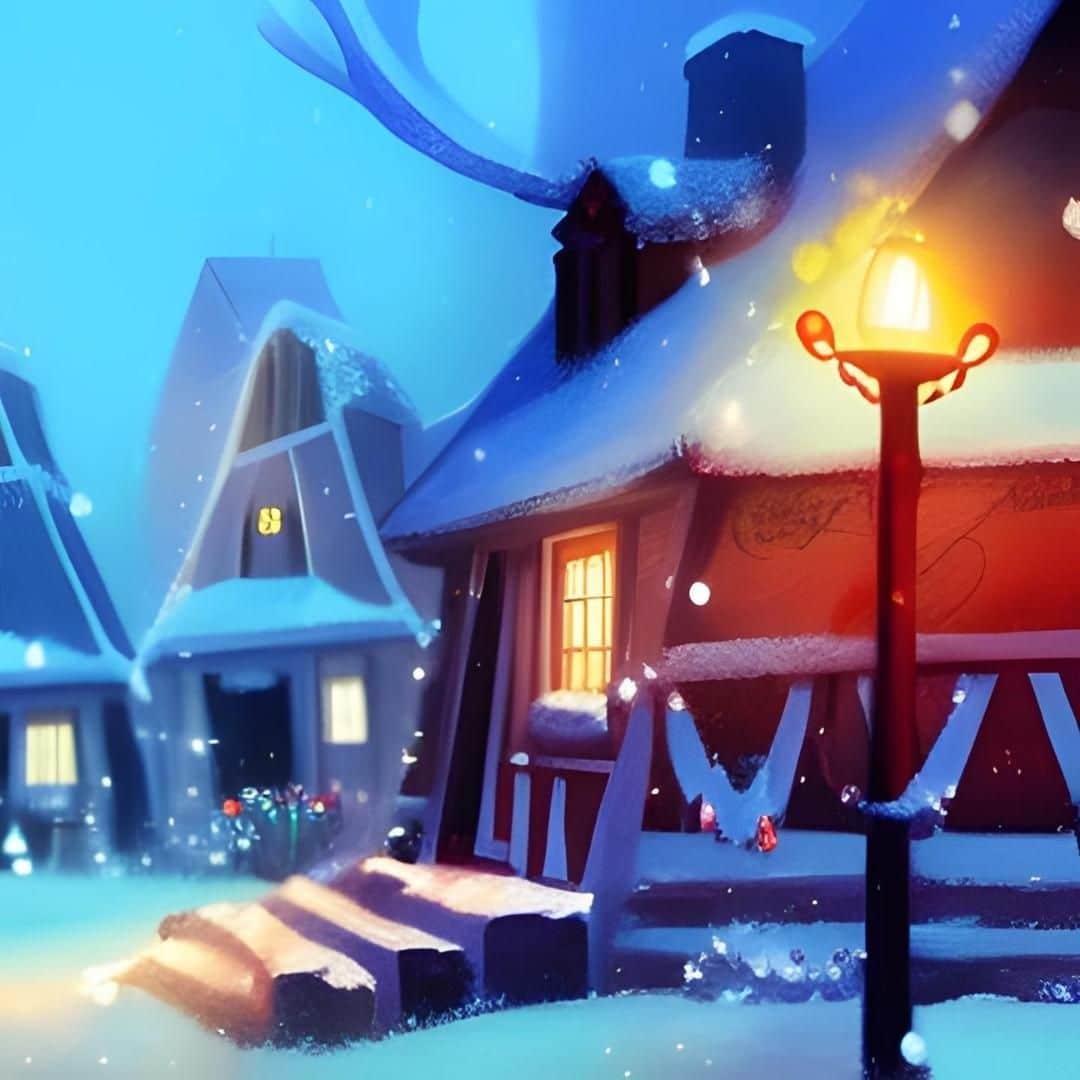The Hourglass: A Philosophical Exploration of Time and Fate
In the quaint village of Timbershade, where cobblestone paths weaved through emerald gardens under the watchful eye of the ancient clock tower, the villagers lived in harmonious obscurity. Among them was a man, Edwin, whose countenance was etched with the sorrows of yesteryears and a gaze that pierced through the veils of existence. Described by those who knew him as a lonesome clockmaker, whose gentle fingers could coax the most stubborn cogs into submission, he lived above his shop, surrounded by the relentless ticking that kept him company.
Edwin’s days melted into the tapestry of routine until one cold autumn evening when a peculiar old gentleman, draped in scholarly robes adorned with celestial motifs, entered the clock shop. The old man, named Professor Alistair, had eyes twinkling with an inner flame as he approached the counter with a peculiar object. «Ah, Edwin, I have something that might interest a man of temporal talents,» he said, laying an intricately carved hourglass upon the oak.
Edwin examined the hourglass with professional curiosity. Its upper bulb contained a swirling blue sand that seemed to shimmer with starlight, while the lower bulb was empty. «This,» intoned Professor Alistair, «is not just a mere keepsake but a relic from another time, rumored to possess the ability to reveal the weavings of fate itself.» The claim seemed incredulous, but something in the professor’s tone suggested a kernel of truth.
That night, as the village of Timbershade slumbered, Edwin found himself unable to resist the allure of the hourglass. With each grain of sand that slipped through the narrow passage, images flashed before his eyes – visions of events, people’s fates, and the interconnected tapestry of time.
Over the next few weeks, these visions became more frequent and detailed. He saw snippets of the villagers’ lives: Sarah, the baker’s daughter, grappling with a secret love; Thomas, the blacksmith, whose strength concealed a crippling fear; and young Lily, the florist, whose laughter masked a profound loneliness. Edwin felt both a voyeur and a guardian, peering into the souls around him.
The visions came with an unexpected price. Edwin’s serene routine was disrupted as he felt compelled to edge the lives he observed towards brighter outcomes. With subtle whispers and minor adjustments, he began altering the flow of daily life. Love letters were misplaced and then found, fears faced with unexpected courage after a seemingly chance encounter, and friendships kindled from the smallest of kind gestures.
As the tapestry of fates shifted, the villagers’ lives transformed in subtle yet profound ways. Sarah found courage in her vulnerability, allowing her love to see the light of day; Thomas, in a moment of fire-lit bravery, sought help for his hidden fears; and Lily found camaraderie in a traveler with a kindred spirit of adventure and laughter.
However, the more Edwin tampered with the course of events, the more the hourglass began to weigh upon his spirit. It was in a wrinkled moment of twilight, as he nursed a cup of tea, that the understanding finally dawned on him. Each intervention came at the cost of his own life’s sand; as people’s fates entwined, his own time rapidly diminished.
Fraught with the magnitude of his actions, Edwin sought the counsel of Professor Alistair. Under the dim library light, heavy with the scent of ancient parchment, the professor listened intently. «Edwin,» he spoke softly, “the hourglass reveals the delicate balance of life. Meddling with fate is not without its sacrifice. For every action, there is an equal and opposite reaction.
Edwin nodded, absorbing the gravity of what he had unwittingly embraced. He realized that he was, in essence, trading his own days for the happiness of others. The nobility of his interventions battled with the primal clinging to life within him. It was this internal conflict that led him to one final decision.
Guided by a newfound clarity, Edwin set about repairing the tear he had made in the fabric of fate. He visited those he had helped, weaving back their original paths but leaving them touched with the wisdom and strength they had gained from his alterations. This restitution was not without its challenges, but Edwin proceeded with a mixture of determination and tenderness.
As he labored to restore the balance, the weight of the hourglass lifted from his shoulders. The blue sand began to flow slower, and the images that once burned so vividly in his mind faded. With each reversal, his own timeline wove itself back into existence, though the strands appeared thinner and more delicate than before.
In time, the hourglass ceased to function, becoming a mere bauble once more. The professor, upon examining the silent relic, offered a somber smile. «You have done well, Edwin. The hourglass was never meant to dictate fate, but to teach us the value of our own time.»
The seasons folded into one another, and life in Timbershade blossomed with an organic harmony. The tales of Edwin’s interventions became the whispered legends among the villagers, though none could truly fathom the depths of his sacrifice.
One late summer’s day, as Edwin was tending to the clocks in his shop, he received a visit from a radiant woman with eyes reflecting the hues of the autumn leaves. She introduced herself as Elara, a traveler who had heard of the clockmaker’s kind heart and curious tale. Her presence was like a breath of fresh air, and in her company, Edwin found an unexpected kinship.
The two shared long conversations that spanned the cosmos and delved into the intricacies of life. It was during one of these exchanges that Edwin opened up about the hourglass and its teachings. Elara listened with rapt attention, her gaze never faltering from his own. «The passage of time is the most significant journey one can embark upon,» she mused. «And to share that journey with another, recognizing the importance of each moment, is perhaps the most profound connection of all.»
As the relationship between Edwin and Elara deepened, the echo of the hourglass’s lessons became a silent melody in their shared existence. They lived each day with a vibrant appreciation, lacing their hours with the golden threads of joy, companionship, and love.
Neither Edwin nor Elara knew how much sand remained in their respective hourglasses, but they understood the inseparable link between time and fate. Though Edwin once believed he held the power to realign destiny’s stars, he now understood that it was the beauty of life’s unpredictable dance that truly mattered.
The quiet village of Timbershade continued its peaceful existence, with the ancient clock tower overseeing the ebbs and flows of time. Edwin’s story was one of many woven through its ticking hands, a reminder that time was not just a keeper of moments but a guardian of the threads that bind us all.
And so, under the timeless gaze of the clock tower, Edwin and Elara walked their path together, hand in hand, savoring the fleeting beauty of each grain of sand that fell from the ever-turning hourglass of life.
Moraleja del cuento «The Hourglass: A Philosophical Exploration of Time and Fate»
In the intricate dance of life, we are both spectators and participants in the passage of time. It is not the control of fate that grants us wisdom, but the understanding of our role within it. Our interwoven paths teach us the value of each moment and the precious nature of the time we are given. May we spend it in a way that enriches not just our own lives, but also those of the people we touch, understanding that the true measure of our wealth is measured in memories, not minutes.




















